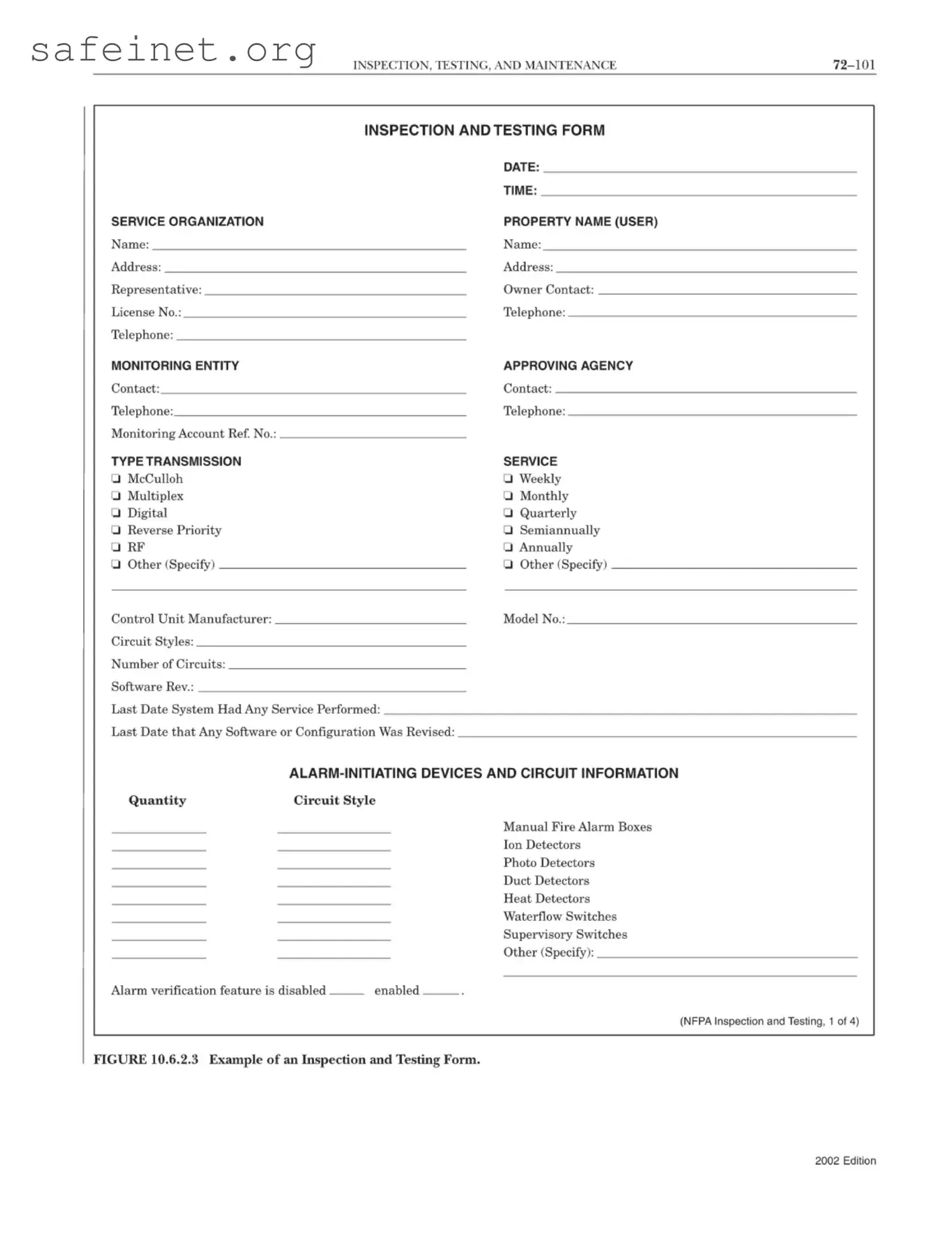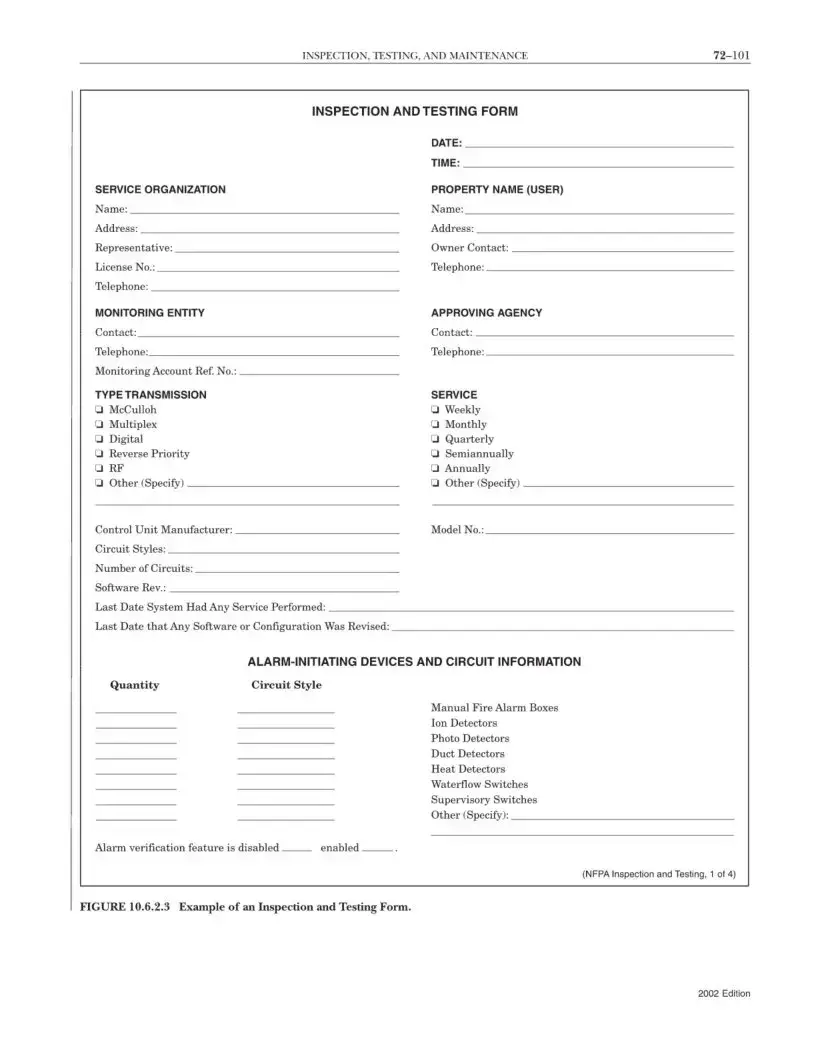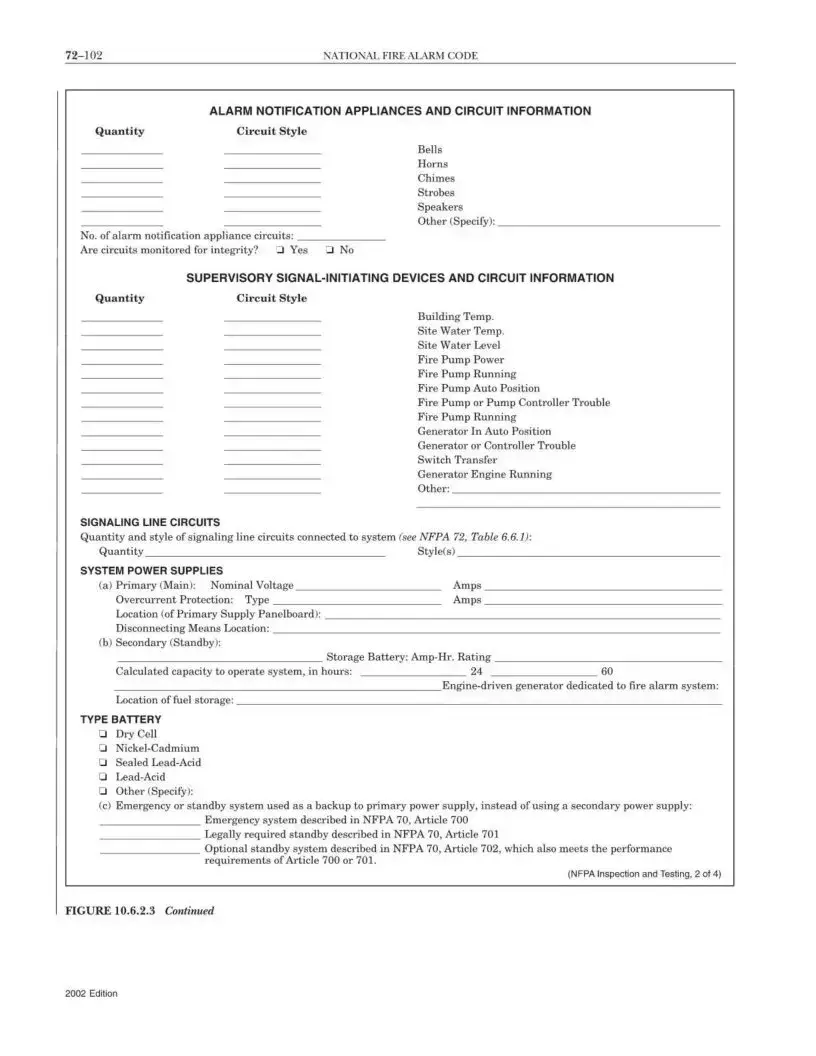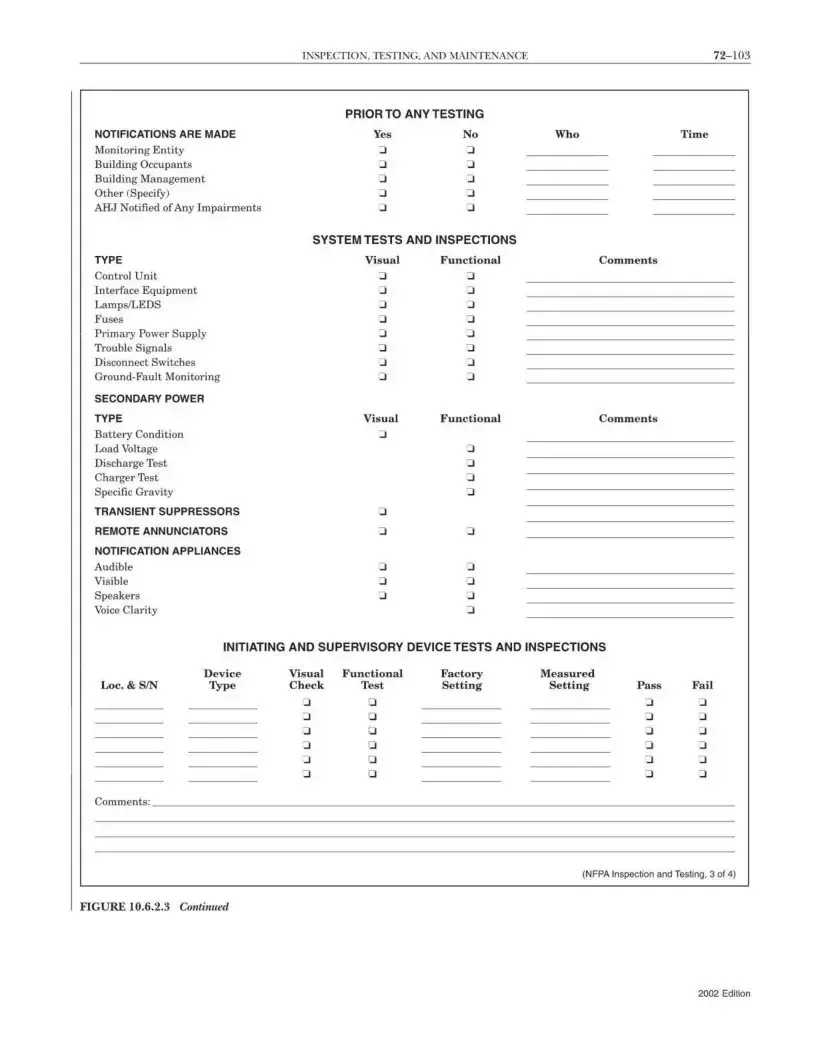The Content form for Inspection, Testing, and Maintenance bears similarities to a Service Agreement. In both documents, the focus is on outlining the responsibilities and expectations of the parties involved. A Service Agreement typically describes the scope of services to be provided, including specific tasks and outcomes, much like the Inspection form specifies various testing and maintenance protocols for fire alarm systems. Notably, both documents involve clear communication between the service provider and the client, establishing who performs each task and the timeframe in which it will occur. This ensures mutual accountability and helps to mitigate potential misunderstandings.
Another document that is similar to the Content form is the Maintenance Log. Both serve the crucial role of documenting inspection and service activities over time. A Maintenance Log records specific dates, actions taken, and any issues that arise, paralleling the detailed sections of the Content form that capture similar information. Furthermore, both documents emphasize the importance of maintaining comprehensive records to track compliance with safety standards and regulations, thus enabling efficient follow-ups and assessments of the system's ongoing performance.
The Inspection Checklist also shares characteristics with the Content form. Both documents act as tools to guide the user through essential tasks involved in verifying the functionality and safety of equipment. The Inspection Checklist often includes a basic 'pass/fail' format for each component, while the Content form allows for more expansive comments on the condition and operation of various system parts. This level of detail is beneficial, as it aids in identifying potential problems that could compromise safety and reliability.
Similarly, the Testing Report serves a comparable purpose to the Content form. Each document aims to provide a detailed account of tests performed on safety systems. While the Content form allows for ongoing responsibility through a structured process, the Testing Report usually focuses on a one-time assessment with results and recommendations. Both documents foster an understanding of the systems' conditions, enabling stakeholders to make informed decisions regarding repair or upgrade needs.
Another relevant document is the Compliance Certification. This document serves to officially declare that a system meets all applicable regulations, much like how the Content form assures adherence to the NFPA standards through detailed inspection and testing tasks. Both documents typically require signatures from authorized representatives to validate the findings. The Compliance Certification emphasizes regulatory adherence, while the Content form details the methods and findings that support such compliance.
The Audit Report is another document that exhibits parallels with the Content form. Both documents aim to ensure that safety and operational standards are being consistently met. The Audit Report often involves an examination of policies, procedures, and practices, while the Content form fits within specific testing and maintenance parameters for fire alarm systems. Each document encourages accountability and highlights the importance of routine evaluation for sustained compliance and safety.
In addition, the Equipment Inventory Form shares similarities with the Content form. Both documents focus on the systematic documentation of all components involved in a fire alarm system. The Equipment Inventory Form typically lists specific pieces of equipment and their details, while the Content form concentrates on their operational status and inspection results. This documentation remains vital for maintaining an understanding of resource allocation and ensuring that all necessary safety measures are in place.
Finally, the Incident Report holds a noteworthy resemblance to the Content form. Both documents document significant occurrences within operational systems, although the Incident Report most frequently addresses an atypical event, such as a system failure or accident. The focus of the Content form on inspections and regular maintenance can provide valuable insights when reviewing these incidents. Together, they create a comprehensive view of system performance, aiding in the prevention of future issues and increasing safety for all involved.




